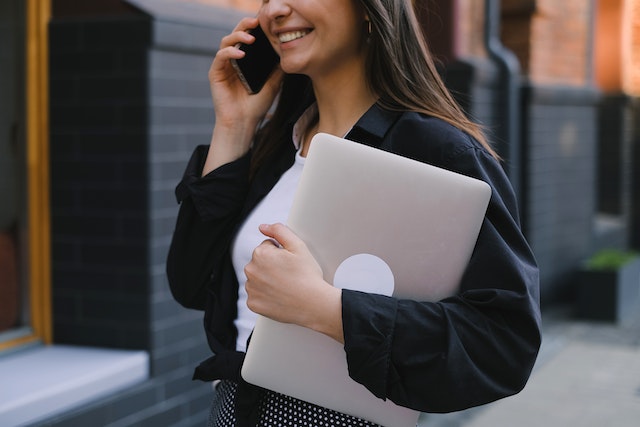How Color Psychology in Website Design Can Drive Business Success
As a website designer, I have always been fascinated by the power of color to evoke emotions and influence behavior. Colors have the ability to grab attention, convey messages, and create a memorable user experience. In this article, I will explore the art of persuasion through color psychology in website design and how it can drive business success.
Understanding the psychology of website design
Before diving into the world of color psychology, it is important to understand the psychology behind website design as a whole. Websites are not just a collection of text and images; they are powerful marketing tools that can shape user behavior. Design elements such as layout, typography, and navigation all play a role in how users perceive and interact with a website. By understanding the psychology of website design, we can harness the full potential of color psychology to create compelling user experiences.
The impact of color on website users
Color has a profound impact on our emotions and can influence our decision-making process. In fact, studies have shown that up to 90% of our initial judgments about products or services are based on color alone. Different colors evoke different emotions and associations. For example, warm colors like red and orange can create a sense of urgency or excitement, while cool colors like blue and green can evoke feelings of calm and trust. By strategically using colors that align with your brand values and target audience, you can create a positive emotional connection with your website users.
The most welcoming colors in web design
When it comes to creating a welcoming website, certain colors have been proven to be more effective than others. One of the most welcoming colors is blue. Blue is often associated with trust, reliability, and professionalism. It has a calming effect and can make users feel at ease when navigating a website. Other welcoming colors include green, which is associated with nature and health, and yellow, which evokes feelings of happiness and optimism. By incorporating these welcoming colors into your website design, you can create a positive first impression and encourage users to explore further.
Using color psychology to drive user engagement
Color psychology can be a powerful tool for driving user engagement on your website. By strategically placing attention-grabbing colors in key areas, you can draw users’ attention to important elements such as call-to-action buttons or promotional offers. For example, using a contrasting color for your “Buy Now” button can make it stand out and increase the likelihood of conversion. Additionally, using color to highlight important information or create a visual hierarchy can guide users through your website and enhance their overall experience.
Creating a cohesive color scheme for your website
While it is important to use color strategically, it is equally important to create a cohesive color scheme that reflects your brand identity. A cohesive color scheme not only helps to establish brand recognition but also creates a harmonious visual experience for users. One way to create a cohesive color scheme is to use a color wheel and select colors that are complementary or analogous to your brand colors. By using consistent colors throughout your website, you can create a sense of unity and reinforce your brand message.
The psychology of different color choices in web design
Different colors have different psychological effects, and understanding these effects can help you make informed color choices in your web design. For example, red is often associated with passion, energy, and urgency. It can be an effective color for creating a sense of urgency, such as in limited-time offers or flash sales. On the other hand, green is associated with growth, health, and nature. It can be a good choice for websites related to sustainability or eco-friendly products. By understanding the psychological associations of different colors, you can make intentional color choices that align with your website’s purpose and desired user response.
Orange – Inviting, Excitement & Comfort
The color orange is vibrant, energetic, and has the power to evoke feelings of excitement and enthusiasm. It is often used to draw attention and create a sense of warmth and comfort. Websites that utilize orange as a dominant color can convey a welcoming and inviting vibe, making users feel at ease and more likely to engage with the content.
Red – Passion, Energy & Strength
Red is a powerful and attention-grabbing color that symbolizes passion, energy, and strength. It is often associated with urgency and can create a sense of excitement and urgency. When used strategically in web design, red can evoke strong emotions and encourage users to take immediate action.
Blue – Powerful Emotions, Peace, Tranquility
Blue is a versatile color that can evoke a wide range of emotions, depending on its shade. Lighter shades of blue are often associated with tranquility, peace, and trustworthiness. On the other hand, darker shades of blue can evoke a sense of power and authority. Websites that incorporate blue in their design can create a sense of calmness and reliability, which can enhance user trust and engagement.
Green – Growth, Renewal & Stability
Green is often associated with nature, growth, renewal, and stability. It is a color that symbolizes harmony and balance. Websites that incorporate green in their design can convey a sense of freshness, health, and environmental consciousness. This can be particularly effective for brands that focus on sustainability or well-being.
Yellow – Happiness and Optimism
Yellow is a vibrant and cheerful color that is often associated with happiness and optimism. It has the power to grab attention and create a sense of positivity. Websites that incorporate yellow in their design can evoke feelings of joy and enthusiasm, making users feel uplifted and more likely to engage with the content.
Purple – Royal, Stimulates Imagination and Creativity
Purple has long been associated with royalty, luxury, and power. It is a color that stimulates imagination and creativity. Websites that incorporate purple in their design can convey a sense of elegance and sophistication, making users feel inspired and captivated by the content.
Black – Sophisticated, Positive, and Negative
Black is a color that is often associated with sophistication, mystery, and power. It can create a sense of elegance and timelessness. However, it is important to note that black can also evoke negative emotions such as fear or sadness. When used strategically in web design, black can enhance the overall aesthetic appeal and create a sense of drama.
White – Innocence, Purity, and Openness
White is a color that symbolizes innocence, purity, and openness. It is often associated with cleanliness and simplicity. Websites that incorporate white in their design can create a sense of spaciousness and clarity, making users feel at ease and more focused on the content.
Case studies: Successful websites that utilize color psychology
To further illustrate the power of color psychology in website design, let’s explore a few case studies of successful websites that effectively utilize color to drive user engagement and achieve business success.
- Spotify: Spotify, a popular music streaming platform, uses a combination of vibrant green and black to create a visually appealing and dynamic website. The green color evokes a sense of energy and growth, while the black adds a touch of sophistication. This color scheme not only reflects the brand’s identity but also enhances the overall user experience, making users feel excited and immersed in the world of music.
- Coca-Cola: The Coca-Cola website is a prime example of how the strategic use of color can evoke strong emotions and create a memorable user experience. The dominant use of red, the brand’s iconic color, not only grabs attention but also evokes feelings of passion, energy, and excitement. This color choice aligns with Coca-Cola’s brand identity and effectively communicates its message to users.
- Apple: Apple, known for its sleek and minimalist design, utilizes a clean and simple color palette consisting of white, black, and shades of gray. This color scheme conveys a sense of elegance, simplicity, and sophistication, which aligns with the brand’s identity and resonates with its target audience. By using color sparingly and strategically, Apple creates a visually appealing website that focuses on showcasing its products and enhancing user experience.
These case studies demonstrate how color psychology can be leveraged to create memorable and impactful website designs that resonate with users and drive business success.
Implementing color psychology in your website design strategy
Now that you understand the power of color psychology in website design, it’s time to implement it in your own design strategy. Start by defining your brand values and target audience. Consider the emotions and associations you want to evoke in your users and choose colors that align with those goals. Experiment with different color combinations and placements to find the most effective design for your website. Remember to maintain consistency and create a cohesive color scheme that reflects your brand identity. By leveraging the principles of color psychology, you can create a website that not only looks visually appealing but also drives user engagement and ultimately contributes to your business success.
Conclusion: Harnessing the power of color psychology in website design
In conclusion, color psychology is a powerful tool that can greatly impact the success of your website design. By understanding the psychology behind website design and the emotional associations of different colors, you can create compelling user experiences that drive engagement and ultimately lead to business success. Remember to choose welcoming colors, use colors strategically to guide user behavior, and create a cohesive color scheme that reflects your brand identity. With the art of persuasion through color psychology, you can elevate your website design and set your business apart from the competition.
Ready to harness the power of color psychology in your website design? Contact our team of experts today to discuss how we can help you create a visually appealing and engaging website that drives business success.



